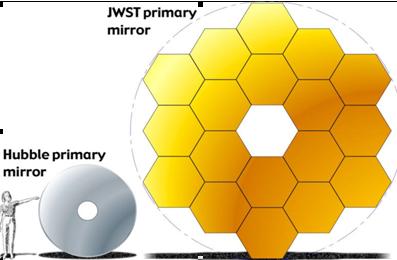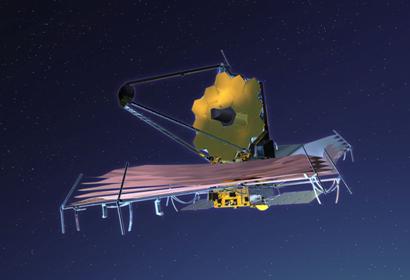The technological innovations in the telescope are also; An infrared detector, a metallic sun shield to block the infrared radiation coming from it, micro cameras and tiny sensors that will pick up waves and even control the function of the telescope

In the new James Webb space telescope, named after the person who was the second CEO of NASA, scientists and engineers have been working diligently for years to develop ten technological inventions that will be installed in it. Huge panels capable of covering a tennis court will serve as sun shields, large mirrors that will locate distant planets in space and will be operated by state-of-the-art computer software. These and other inventions have now moved from the laboratory stage to the production stage.
To look at the bright light of a star is actually entering into a time tunnel, deliberately, that the light of stars reaches the earth after years. Once all the technological innovations are installed in the telescope and it is launched into space, scientists will be able to learn about the first generation of galaxies and stars as they appeared when the universe was 400 million years old from the big bang, and for the scientists this is a big step for humanity.
The scientists believe that these innovations will be able to survive the flight into space and operate correctly and accurately. Among the technological innovations in the telescope are also; An infrared detector, a metallic sun shield to block the infrared radiation coming from it, micro cameras and tiny sensors that will pick up waves and even control the telescope's function. These innovations must be at a low temperature close to absolute zero because the telescope will absorb large amounts of light and heat from the stars around it, therefore the mirrors, sensors and detectors will be integrated with liquid nitrogen freezing technology ("cryogenic"), which means ice cold.
Most of the technological innovations have not yet been installed on any satellite or other space telescope. The micro cameras are actually tiny apertures the width of a few hairs on the head, and they will allow scientists to remotely control and block unwanted flashes of light. Wave sensors and control refer to a set of logarithms and computer programs that will help determine the best position for the mirrors and even adjust their position as needed. It will also allow the mirrors to operate sensitively and look deep into space and time.
NASA is introducing the innovations now, even though the telescope is still under construction and this is because the scientists wanted to know if the latest technology would be included in the mission, and also to be sure that the new inventions would allow the space telescope to work properly. "These early tests are designed to increase NASA's budget for the project," says Eric Smith, a scientist at the NASA Space Center in Washington. NASA does not work alone, it is helped by scientists and engineers from different companies in the world. The launch of the telescope is planned for 2013.

Translated: Yariv Zerbiv.
מקור: A NASA press release published, among others, in Science Daily -

3 תגובות
Those who don't know. 300 million years from the big map is the earliest that can be seen. Before that the universe was dark.
400 million years - the first of the big bang....????
You forgot to mention Webb's mirror next to Hubble's mirror. Webb's mirror diameter is 6.5 meters compared to Hubble's 2.4. Webb will be 100 times more sensitive and in order to protect his mirror, a defense surface the size of a court will be deployed. One of the tasks that will be assigned to Webb is the study of dark matter. He will be placed at the second Lagrange point where the gravity of the Sun and the Earth balance each other.